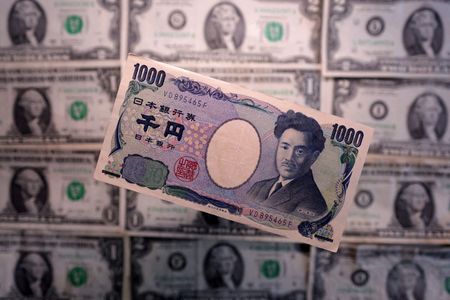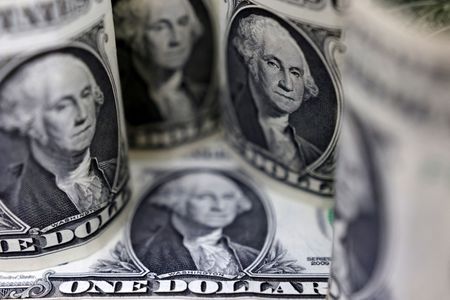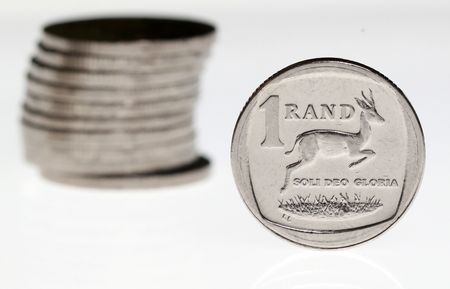By Tom Westbrook
SINGAPORE (Reuters) -A sliding yen helped the dollar higher on Thursday as the Bank of Japan lowered growth forecasts in light of U.S. tariffs and left rates on hold, while investors watched for signs of the trade war cooling and waited for U.S. employment data.
The yen dropped by about 0.8% to 144.23 per dollar, its weakest since mid-April. The central bank’s hold on interest rates was unanimous and expected but investors saw the downgraded outlook as reducing the likelihood of future hikes.
“To me it sounds like it’s literally a holding pattern,” said Bart Wakabayashi, branch manager at State Street in Tokyo.
“The uncertainty of the U.S. policies is causing everybody to just pause.”
The Bank of Japan projected real GDP growth of 0.5% for the 2025-26 fiscal year, down from 1.1%.
The dollar has so far been one of the bigger casualties of the trade war as President Donald Trump’s flip-flopping tariffs have hit growth expectations and rattled confidence, notching its largest monthly fall for 2-1/2 years through April.
But it has come off lows as Trump has suspended much of the hit and hinted at deals, including with China, which has the highest levies.
The dollar’s rebound extended on Thursday, pushing the euro down about 0.4% to a two-week low of $1.1288 and sterling about 0.4% weaker as well to $1.3280.
“We’re in a window here where we’re on a de-escalation path, and there are some de-escalation trades around it,” said Richard Franulovich, Westpac’s head of currency strategy in Sydney.
Trump said on Wednesday that he has “potential” trade deals with India, South Korea and Japan and that there is a very good chance of reaching a deal with China.
U.S. Trade Representative Jamieson Greer had said earlier on Wednesday that no official talks were happening with China though Yuyuan Tantian, a social media account affiliated with Chinese state broadcaster CCTV, said the administration had approached China seeking discussions.
A surge in imports to front-run tariffs dragged GDP into contraction mode in the first quarter, U.S. data showed on Wednesday, though some economists took private demand holding up as a positive sign.
Jobless claims and the ISM manufacturing survey are due later on Thursday, though April jobs figures on Friday will be the next piece of hard data markets will use to gauge recession risks.
Expectations are for a slowdown in hiring to 130,000.
The Australian and New Zealand dollars stood steady against the dollar and are trading in the top half of recent channels.
The Aussie hovered at $0.6391 with some support as a slightly hotter-than-expected inflation reading toned down some of the more dovish bets on the rates trajectory. The New Zealand dollar held its ground at $0.5928.
(Reporting by Tom Westbrook; Editing by Shri Navaratnam and Jacqueline Wong)










